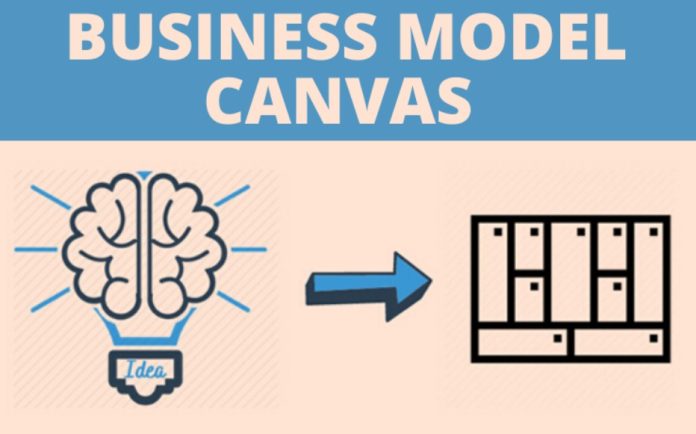The most crucial element of a business model canvas is the value proposition. It determines the fundamental offering of the business and drives its operations. A good example of this is Spotify, whose mission statement is “Music for everyone.” The company aims to provide a platform where people from different walks of life can find the perfect music selection. If you need help to develop your Business Model Canvas, visit Digital Leadership.
Personas are the key driver of most business models
Personas are a powerful way to align your team around a shared understanding of your audience. They can also help you optimize your marketing and sales efforts by identifying the best leads and customers. By leveraging data from your customer database, you can develop buyer personas and make the most effective use of those profiles.
A well-executed persona is based on a detailed analysis of the needs and wants of a target group. It is based on rich behavioral data, attitudinal insights, and mental models. This type of analysis requires qualitative research with real users. It should also include information on specific goals, similar to a job-to-be-done definition.
Buyer personas can be developed through a variety of research methods, including interviews and surveys. It is important to remember not to exclude leads who do not fit into a particular persona. It’s also important to remember that a buyer persona isn’t limited to one specific group.
The buyer persona is central to a B2B organization. It often represents decision-makers and influencers within a company. They are going to have different needs and goals than the user persona. While they might be concerned about improving their own job, they will also have concerns about the company’s budget. A decision-maker is a narrower version of a persona, typically an executive or upper-level manager.
Cost structure building block
The cost structure of a business describes the resources and activities needed to produce a product or service. It includes costs for labor, raw materials, and services. Some businesses have low cost structures, while others have high costs. To determine the cost structure, entrepreneurs must first determine the types of expenses they incur in running their business. They should also re-evaluate their costs on a regular basis.
The cost structure building block on the business model canvas outlines the main costs of a business’s activities. Costs can include things like infrastructure, human resources, and customer relationships. It should be linked to the other building blocks in the model. The cost structure may become more variable when other elements are considered, such as revenue streams and partnerships.
A business model canvas can help entrepreneurs create a strategy for starting a new venture or expanding an existing one. This model will help entrepreneurs identify potential opportunity gaps, make competitive analyses, and find ways to improve processes. Business owners can also use the Business Model Canvas to pitch investors and align their team members around the goals of the business.
The cost structure is one of the most important building blocks on the business model canvas. This building block details the costs of running a business, both fixed and variable. Most new businesses fail because they don’t fully understand these costs.
Unfair advantage box
The Unfair advantage box on the business model canvas describes the unique advantage that your idea has over competitors. For example, if you are the only company selling a product that a particular demographic or geographical region needs, you have an unfair advantage over your competitors. This is the key difference that sets you apart from your competition.
Identifying your unfair advantage is essential if you want to gain a sustainable advantage in your industry. While you may not be able to find it right away, it’s important to identify it and exploit it as quickly as possible. While few startups will find their unfair advantage right away, you should use it as a guiding principle as you build your business.
Next, you should figure out how your business will deliver value. You should fill in the solution box after you’ve mapped out your customer segments. You can fill out this box by comparing your offerings to your competitors. You can also compare the channels of your business model canvas with customer relations.
Using a business model canvas is important for the success of your business. This tool helps you identify the critical elements of your business model and iterate on your strategy to improve it. This will give you a better idea of where you stand in your industry and make your business more valuable.
Value proposition building block
The Value Proposition building block on a Business Model Canvas is an important part of any startup’s business plan. This building block describes the unique combination of products and services that solve a problem for a specific customer segment. In other words, your value proposition should create value for the customer and set you apart from your competitors. You can create multiple value propositions for the same product, or you can create one unique value proposition for each segment of your customer base. Most start-ups fail to define their value proposition before launching. They usually run with their ideas and don’t take the time to understand the market, or how the product or service will perform in that market.
To determine the value proposition of your product or service, you must first identify your target customers. This is often done through market research, which helps you understand the characteristics of the different segments of your customer base. You can also determine which customers you are targeting with your value proposition by using the Jobs to Be Done concept. Once you have identified the right customer segments, you can determine the value proposition and revenue stream for each segment.
A Value Proposition is the main element of any successful business. If you are creating a value proposition for your customers, you must ensure that your company can create the right product or service and deliver it to them in a way that matches their needs and expectations. In this way, your customers will be satisfied and want to return to your business.
Value proposition canvas template
A value proposition canvas template can be used to help you understand the value of your product or service and develop a plan for research. A value proposition canvas has nine boxes, each carrying a message related to an aspect of your business. To create a value proposition, you will need to fill in these boxes in as much detail as possible. It’s important to be as specific as possible, but you shouldn’t be too specific. In this way, you can focus on one or two of the boxes and get a clear picture of what your business is offering to the customer.
Once you’ve framed your business model, you’ll need to think about your revenue streams. The revenue streams of your business model are the sources of your cash flows. In a business model, revenue streams refer to the different ways that a company generates income. For example, Apple’s revenue streams include selling products and services and accepting various forms of payment.
The value proposition canvas template is simple to use and provides a simple way to visualize your business model. It breaks down the value you provide for your customers into three different categories: customer experience, product value, and customer expectations. It also breaks down the customer’s tasks and expectations. The right part of the circle represents your end users, and the left part of the circle defines how you’re providing value.
Examples of business model canvas
The business model canvas is a tool that can help an entrepreneur visualize the value proposition and key drivers of a business. This method can be used in a variety of settings, from startups to established organizations. However, it is important to note that it should be simple enough to fit on a single sheet of paper. The process of creating and revising a canvas with multiple pages can be time consuming and not as useful.
In a nutshell, a business model canvas is a top-level plan that can be easily adapted and updated as the business grows. One of the most straightforward examples of a business model canvas is the lemonade stand. This is perhaps the most intuitive model for a first-time business owner.
Another example is a software startup. The founders of this company are not manufacturing the goods themselves, but rather relying on third-party manufacturers or suppliers. Their revenue is largely dependent on this supply chain, and any shortcomings can cause a negative impact on the company’s bottom line. Other business model canvas examples include Airbnb, which allows people to rent out their homes. The company collects a commission from the host, and a percentage from the guests.
Another example of a business model canvas is Spotify, a music streaming service. Spotify makes music accessible to a wider audience, which in turn benefits the artists who create it. Spotify also enables these artists to share their songs with their current fan base, which is a big part of their marketing efforts.




![Deconstructing the Myth of Entrepreneurship iStock-2151090098 [Converted]](https://www.europeanbusinessreview.com/wp-content/uploads/2024/09/iStock-2151090098-Converted-218x150.png)





























